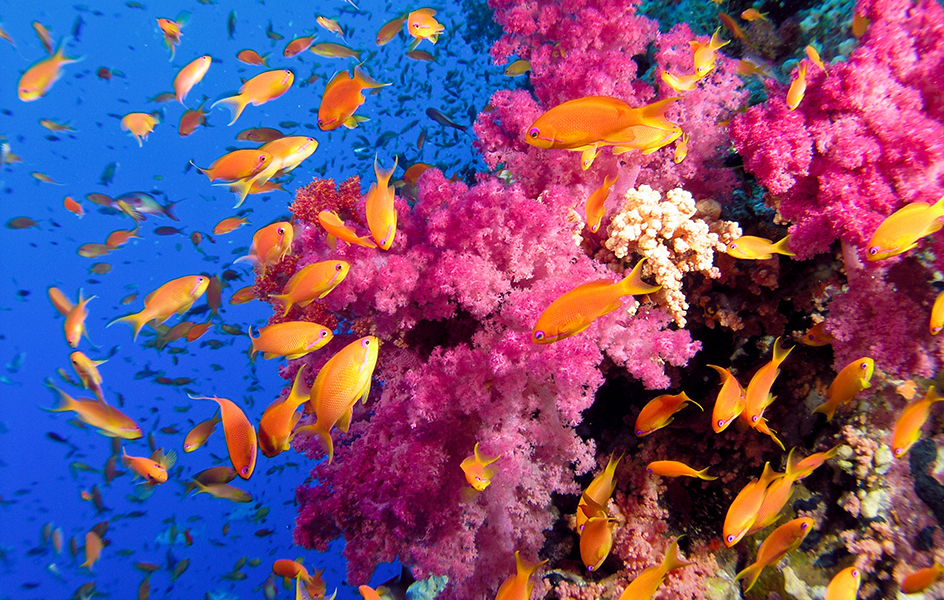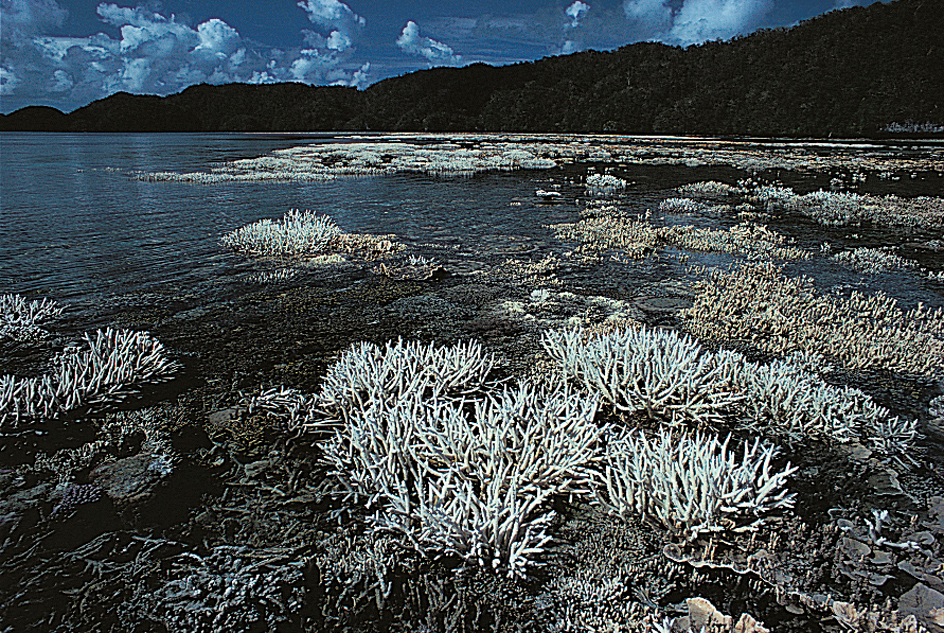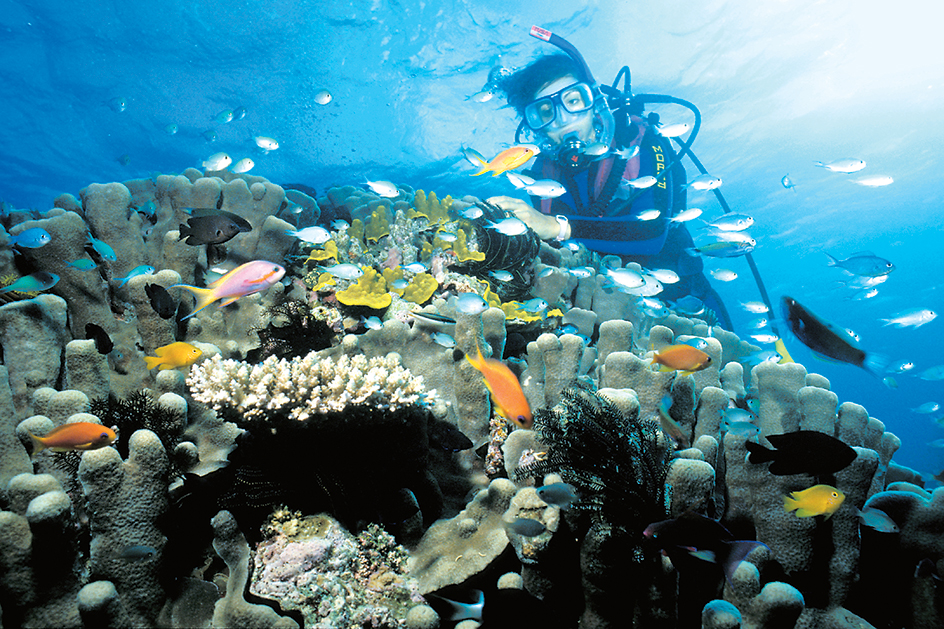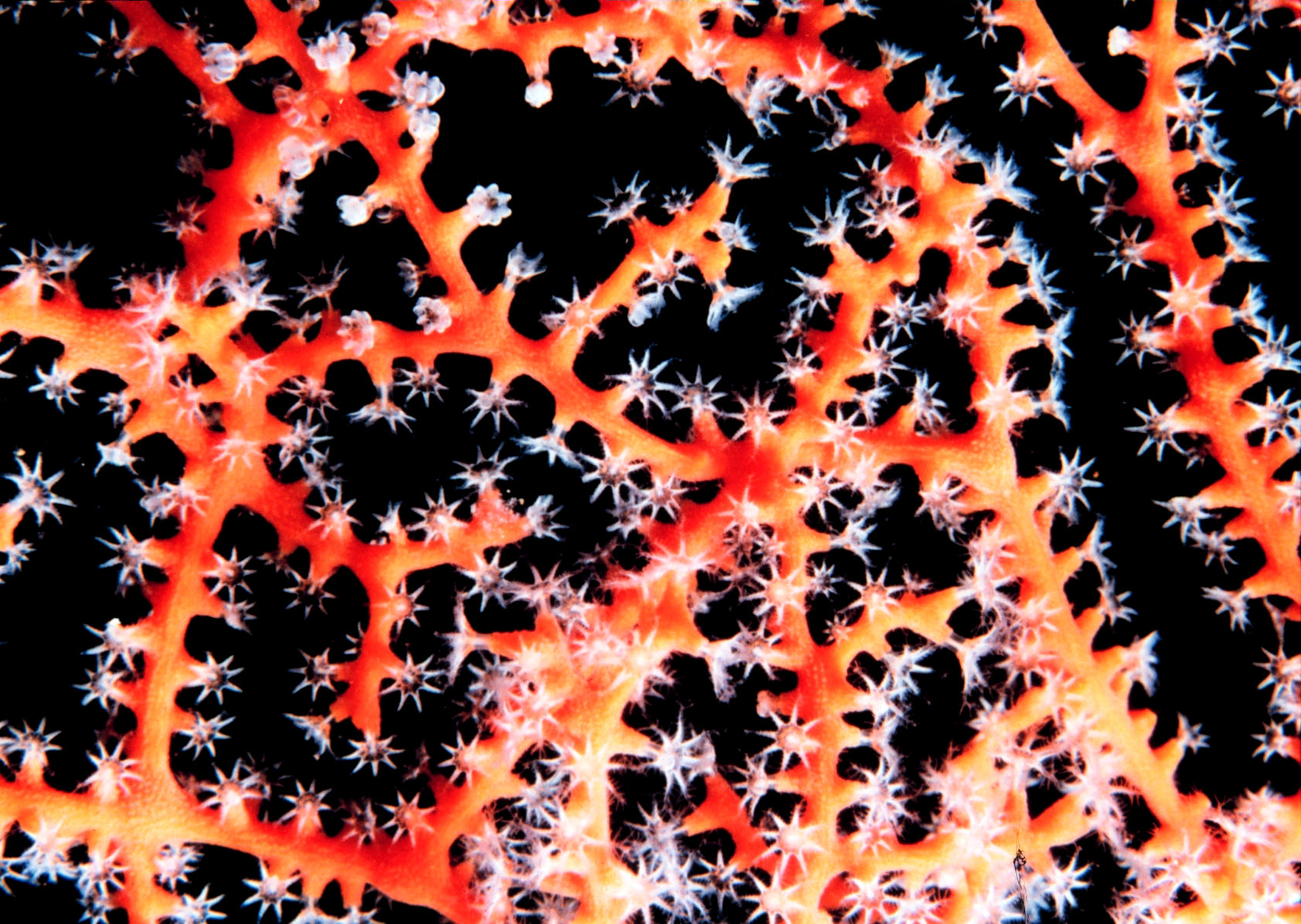Coral << KAWR uhl >> is any of a large group of marine animals related to jellyfish and sea anemones. Nearly all coral animals live together in colonies. Most individual corals, called polyps, grow less than 1 inch (2.5 centimeters) in diameter. But a small percentage measure as much as 1 foot (30 centimeters). A coral polyp has a cylinder-shaped body. At the top end is a mouth surrounded by tiny tentacles. Depending on the type of coral, the base of the polyp attaches to other living polyps or to the limestone skeletons of dead polyps. Many kinds of corals create limestone formations called coral reefs. Coral reefs look like lovely sea gardens because of the many colorful sea animals that live among the corals. For more information on coral reefs, see Coral reef.

Coral polyps live together in colonies. Stony corals make up the best known group of corals.
Stony corals
build coral reefs. In most species, living polyps attach themselves to each other with a flat sheet of tissue that connects to the middle of each body. Half of the coral polyp extends above the sheet and half below. Each polyp builds its limestone skeleton by taking calcium from seawater and then depositing calcium carbonate (limestone) around the lower half of its body. As new polyps grow, the limestone formation becomes larger, eventually creating the structure of a coral reef.
Coral polyps feed mainly on tiny swimming animals, such as the larvae (young) of many kinds of shellfish. Most reef-building corals cannot live without single-celled algae called zooxanthellae, which live in the polyp’s own tissue. The polyps use as food some of the waste products released by the algae. Zooxanthellae also help the corals secrete their limestone skeletons. Coral reefs grow only in water with enough light for photosynthesis to occur in the algae. Photosynthesis is the process in which an organism converts energy from sunlight into food.

Coral polyps reproduce either from eggs or by budding. Small, knoblike growths called buds appear on the body of an adult polyp, or on the connecting sheet. These buds grow larger, separate from the parent, and begin to deposit their own limestone in the colony. Budding helps the colony increase its size.

New colonies of coral polyps form when the adult polyps of an old colony produce eggs. The eggs grow into tiny forms that swim away. Then the developing animals settle to the sea bottom and begin to form new colonies by budding.
Various marine animals eat living stony corals. The loss of coral to such animals is usually balanced by the development of new coral colonies and the growth of old ones. But beginning in the 1960’s, large numbers of crown-of-thorns starfish destroyed stony coral colonies on many reefs of the southwest Pacific Ocean. Scientists are trying to determine what has caused this starfish to become so numerous.
Other kinds of corals
form internal rather than external skeletons. Gorgonian corals, for example, have internal skeletons of a flexible, horny substance. These corals look like bushes, fans, or whips and may have soft yellow, rose, purple, brown, tan, or black coloring. Gorgonian corals, which include sea fans and sea whips, live in waters around the world.

People use the term precious corals for many kinds of corals with internal skeletons, including some gorgonian corals. Precious corals are valued for jewelry. They have a hard core (internal skeleton) that can be polished. Polishing brings out beautiful red, rose, or pink colors. Craftworkers carve precious corals into beads and other ornaments. Many of these corals grow in bushlike formations in the Mediterranean Sea and the Sea of Japan (also called the East Sea).
